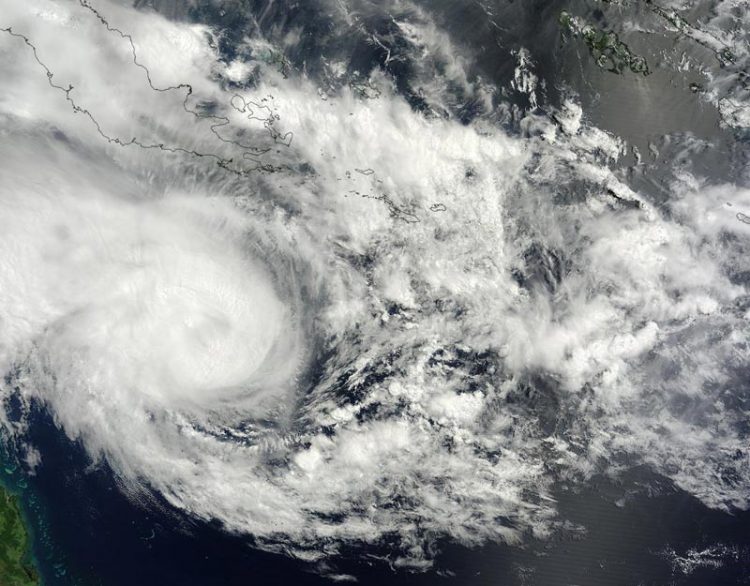NASA sees Tropical Cyclone Nathan moving south and strengthening

NASA's Terra satellite captured this visible image of Tropical Cyclone Nathan east of the Queensland coast on March 16 at 0:00 UTC. Credit: NASA Goddard MODIS Rapid Response
At 0900 UTC (5 a.m. EDT), Tropical cyclone Nathan's maximum sustained winds were near 55 knots (63.2 mph/102 kph) and the storm was consolidating and organizing.
The Joint Typhoon Warning Center (JTWC) forecasters expect Nathan to strengthen to 70 knots in two days.
Nathan was centered near 14.3 south latitude and 150.2 east longitude, about 298 nautical miles east-northeast of Cairns, Australia. It was moving to the southeast at 5 knots (5.7 mph/9.2 kph).
JTWC noted satellite imagery revealed “a slowly-consolidating low-level circulation center slightly to the east of the deepening convection.”
Nathan is moving southeast. The Joint Typhoon Warning center expects Nathan to strengthen to about 70 knots (80.5 mph/120.6 kph) in a couple of days before weakening again and turning back to the west toward Queensland.
Media Contact
All latest news from the category: Earth Sciences
Earth Sciences (also referred to as Geosciences), which deals with basic issues surrounding our planet, plays a vital role in the area of energy and raw materials supply.
Earth Sciences comprises subjects such as geology, geography, geological informatics, paleontology, mineralogy, petrography, crystallography, geophysics, geodesy, glaciology, cartography, photogrammetry, meteorology and seismology, early-warning systems, earthquake research and polar research.
Newest articles

A new look at the consequences of light pollution
GAME 2024 begins its experiments in eight countries. Can artificial light at night harm marine algae and impair their important functions for coastal ecosystems? This year’s project of the training…

Silicon Carbide Innovation Alliance to drive industrial-scale semiconductor work
Known for its ability to withstand extreme environments and high voltages, silicon carbide (SiC) is a semiconducting material made up of silicon and carbon atoms arranged into crystals that is…

New SPECT/CT technique shows impressive biomarker identification
…offers increased access for prostate cancer patients. A novel SPECT/CT acquisition method can accurately detect radiopharmaceutical biodistribution in a convenient manner for prostate cancer patients, opening the door for more…




















